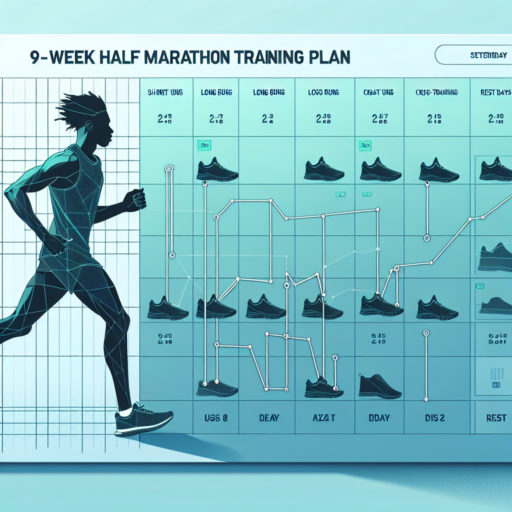What is the best workout schedule for athletes?
Finding the best workout schedule for athletes hinges on understanding the balance between intense training and adequate rest. For most athletes, a mix of strength, endurance, flexibility, and skill training spread across the week yields optimal results. It’s crucial to tailor the schedule to the individual’s sport, goals, and current physical condition to enhance performance and prevent injuries.
An effective workout schedule often involves periodization, a strategy that cycles different aspects of training during specific times. This might mean focusing on building strength in the off-season, transitioning to power and speed closer to competition, and maintaining fitness levels during the competitive season. Each phase targets improvements in performance while keeping the athlete’s body in peak condition.
Key Components of an Athlete’s Workout Schedule:
- Strength Training: Crucial for building muscle mass and improving explosive power.
- Endurance Training: Increases cardiovascular capacity, vital for almost all sports.
- Flexibility and Mobility Exercises: These are essential for maintaining a full range of motion and preventing injuries.
- Rest and Recovery: Equally important as active training days, allowing the body to repair and strengthen.
Ultimately, the best workout schedule for athletes will be the one that is personalized to their specific needs. Incorporating a variety of training types, ensuring rest days, and adjusting the intensity and volume of workouts based on the athletic season are all critical components. Working closely with a coach or a sports scientist can help athletes create an effective, sustainable training schedule that leads to peak performance.
How to structure an athlete workout?
Structuring an athlete’s workout plan is crucial for enhancing performance, building strength, and preventing injuries. The key is to design a comprehensive routine that addresses all aspects of fitness, incorporating a variety of exercises that target different muscle groups and athletic skills.
Understanding the Goals and Needs
Before diving into the specifics, it’s essential to comprehend the athlete’s individual goals and needs. Whether the focus is on speed, agility, endurance, or strength, the workout must be tailored accordingly. Identifying the sport’s demands and the athlete’s weaknesses allows for a more focused and effective training program.
Components of an Effective Workout
- Warm-Up: Starting with a dynamic warm-up to prepare the body for intense activity and reduce the risk of injury.
- Core and Strength Training: Incorporating exercises that build core stability and improve overall strength, crucial for any athlete.
- Cardiovascular Endurance: Including cardio exercises to enhance heart health and stamina, tailored to the athlete’s sport.
- Flexibility and Cool Down: Ending with stretching to improve flexibility and a cool down to help the body recover.
Adapting the workout to the athlete’s current fitness level and progression is vital to ensure continual improvement without risking overtraining or injury. Regularly assessing the athlete’s performance and adjusting the plan accordingly will keep the training challenging and beneficial.
What is a 4 day workout split for athletes?
A 4 day workout split is a structured exercise regimen designed specifically for athletes seeking to enhance their strength, endurance, and performance. This type of training schedule divides the athlete’s workload over four days within a week, each day focusing on different muscle groups or performance aspects. The beauty of this arrangement lies in its balance between workout intensity and recovery time, allowing athletes to train more efficiently while minimizing the risk of injury.
The split typically segments the body into upper and lower parts or may focus on pushing and pulling movements, with each session dedicated to specific exercises aimed at developing those areas. For instance, an athlete might dedicate the first day to upper body strength, the second to lower body power, the third to core and stability, and the fourth to agility and speed training. This separation ensures that each muscle group receives adequate attention and recovery time before being worked again.
Moreover, a 4 day workout split allows for a high degree of customization based on the athlete’s individual goals, sports requirements, and areas needing improvement. By focusing on different muscle groups each day, athletes can address their weaknesses and enhance their overall performance in a structured yet flexible manner. This approach also enables coaches and trainers to adjust the training intensity and volume based on the athlete’s progression, ensuring continuous improvement without overtraining.
In practice, athletes might incorporate a variety of training methods within their 4 day split, such as weightlifting, plyometrics, cardiovascular exercises, and sport-specific drills. Balancing these elements is crucial for developing a well-rounded athlete capable of excelling in their sport. Whether you’re a sprinter looking to improve your explosiveness or a football player focusing on upper body strength, a properly designed 4 day split can be customized to meet your needs and help you achieve your athletic goals.
No se han encontrado productos.
How many times a week should an athlete workout?
Understanding the optimal frequency of workouts for an athlete often sparks a vigorous debate among fitness professionals. Nonetheless, it is universally acknowledged that the intensity and goals of one’s training play a pivotal role in determining the ideal number. Generally, a foundation of 3 to 5 days per week is recommended for most athletes to ensure recovery, performance improvement, and risk reduction of injury.
For athletes focusing on strength and endurance training, incorporating a mix of high-intensity workouts and moderate activity across the week allows the body sufficient time for recovery. Recovery is vital as it helps in muscle repair and growth, which is essential for athletic development. High-intensity training sessions, in particular, should be followed by at least one rest day or a day dedicated to lighter, recovery-focused activities to optimize results and minimize the risk of overtraining.
Variation in training plays a crucial role in how often an athlete should workout. It’s not just about the number of days but also the types of exercises performed. Balancing between cardio, strength, flexibility, and rest days can help in achieving a well-rounded fitness regimen. Athletes may adjust their weekly schedule based on the intensity of their training sessions and their body’s response to exercise. Listening to one’s body and adjusting accordingly is key to maximizing performance and maintaining optimal health.



